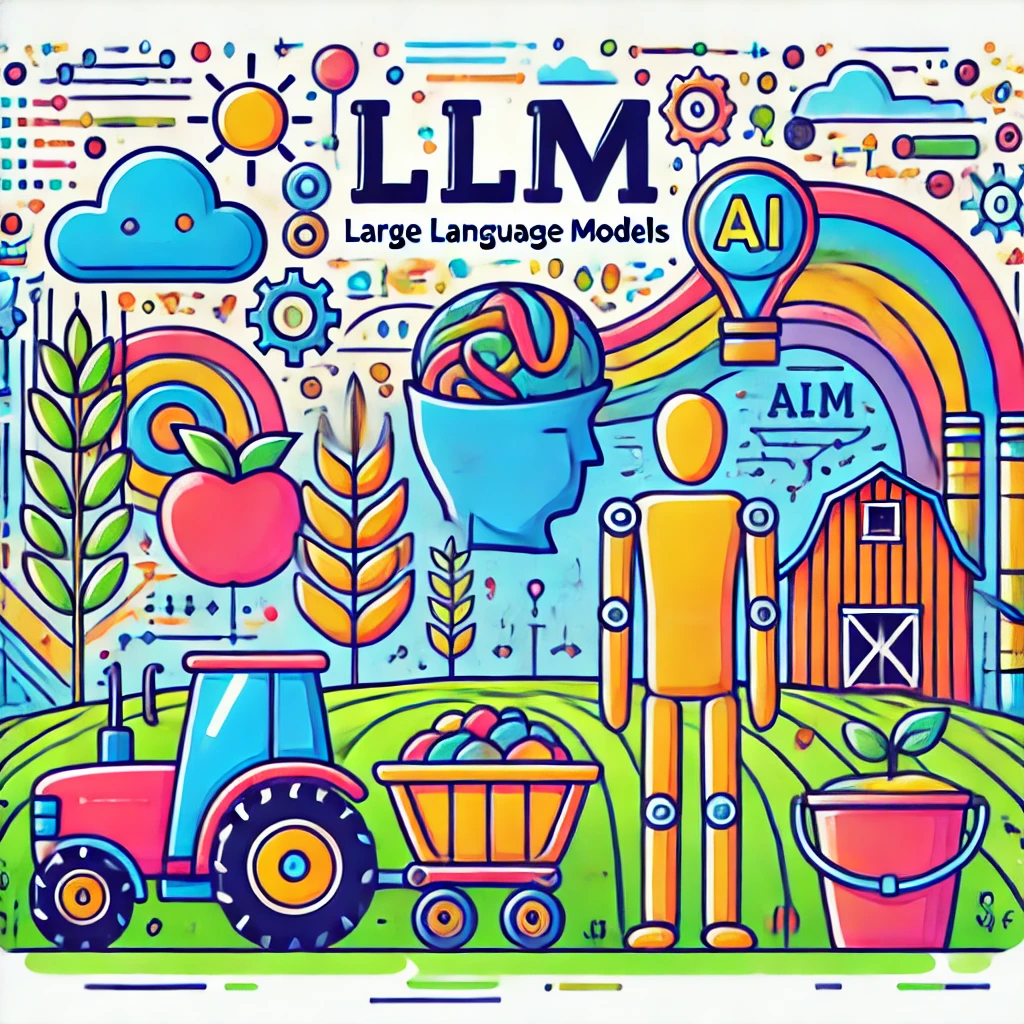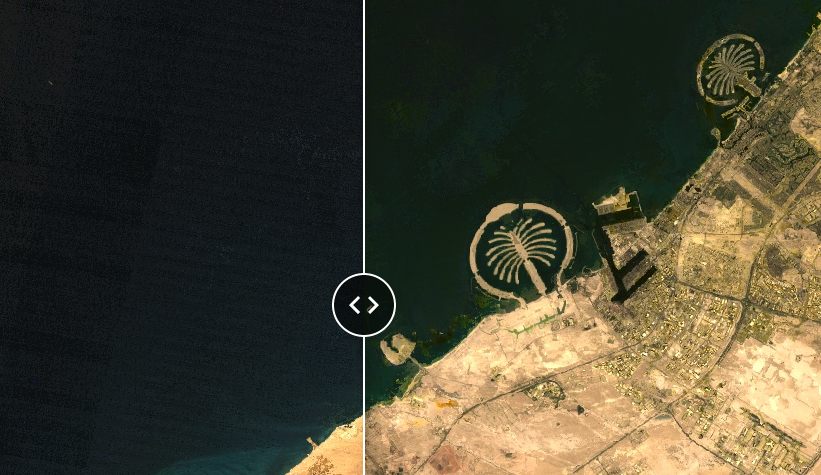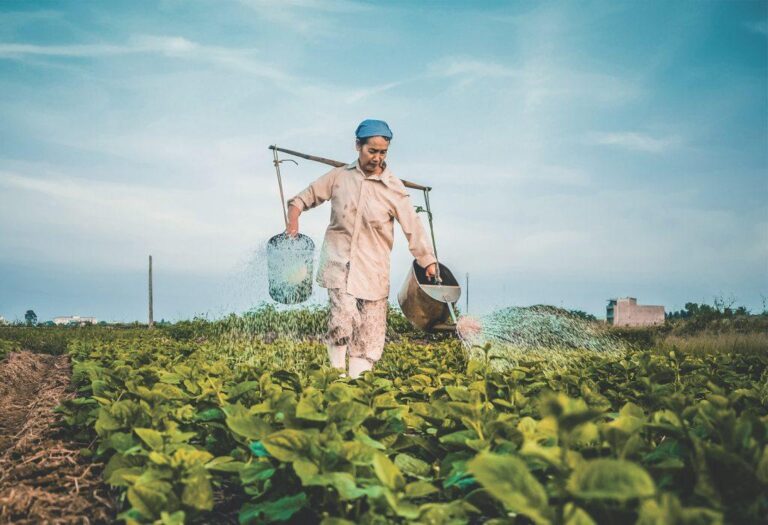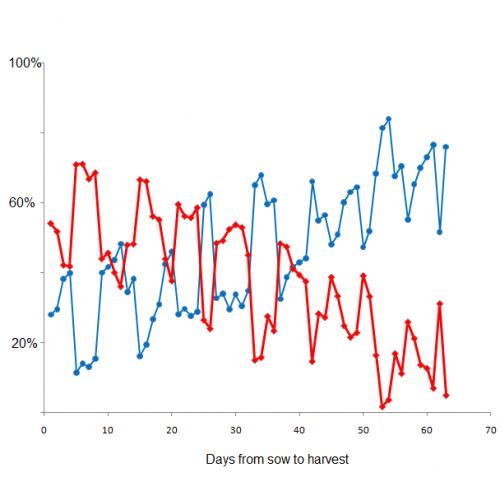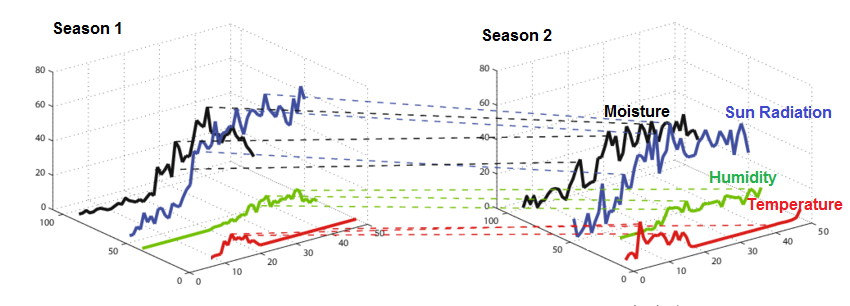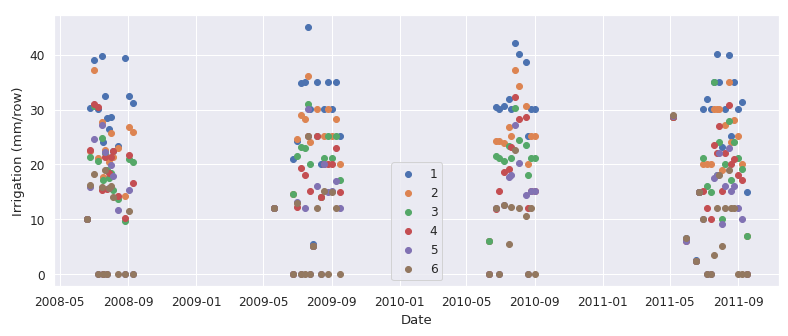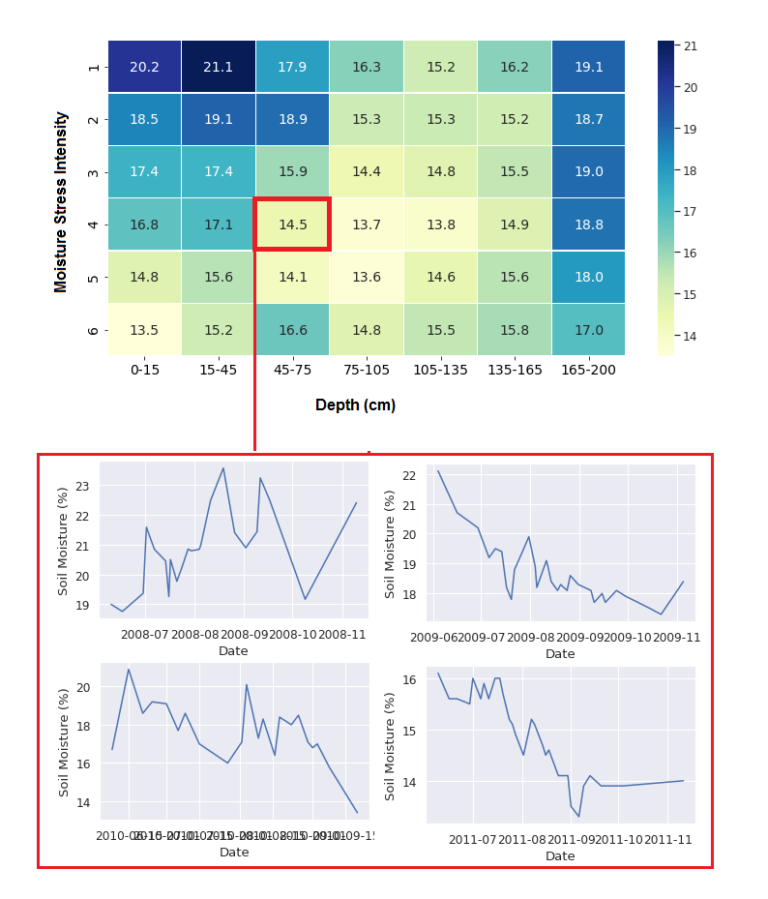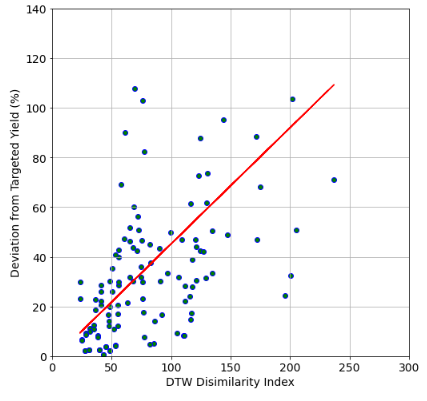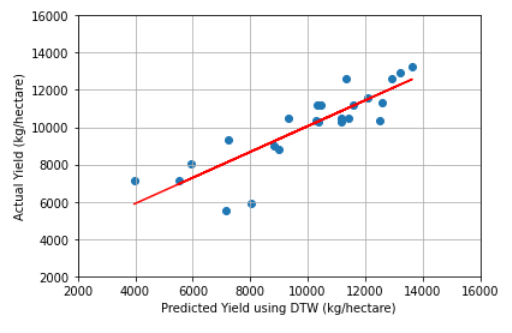In AI these attributes are called time series data. A farmer with access to precision agriculture tools collects many time series data from different locations of the farms. Farmers also collect non-time series data that they would rather to predict in advance, such as yield, harvest biomass, 1000-grains or occurrence of a specific disease. Now the question is how to interpret the relation between multiple time series inputs and single value outputs in a quantifiable way. Similarly, over different farming seasons, and along different locations in a farm, much more time series data could be collected. Examples are soil moisture at different depths, relative humidity, temperature, wind speed, and sun radiation. The challenge is that such a data (let assume data from 20 locations in a farm over 5 farming seasons) cannot even get visualized easily, let alone to make quantitative predictions based on that.
The Solution of AI for Yield Forecasting
AI can find similarities of time series data with multiple attributes (original image from this source)
Case Study on How to Predict Corn Yield under Stress
In addition to soil moisture, data from variations in temperature, humidity, sun radiation, and wind were also collected over the farming seasons. The moisture in different depths of soil depends on the sum of irrigation and precipitation, together with some other attributes such as air humidity and temperature. The heat map below shows the average soil moisture at different depths of soil for different moisture stress over farming season for 4 years.
AI Techniques Predict Crop Yield in Drought Stress with High Accuracy
Another advantage of this method to other AI models is that DTW could be applied to rather small number of experiments, while most of machine leaning models require large datasets for the model to get trained, and evaluated on test samples. With this method, a farmer or grower could have an estimate of yield through finding and comparing the most similar historical pattern. Graph below predicts the yield of corn by finding a farming season with closest time series attributes.
Plants with the same genetic pool that experienced similar environmental conditions will have similar outputs.


